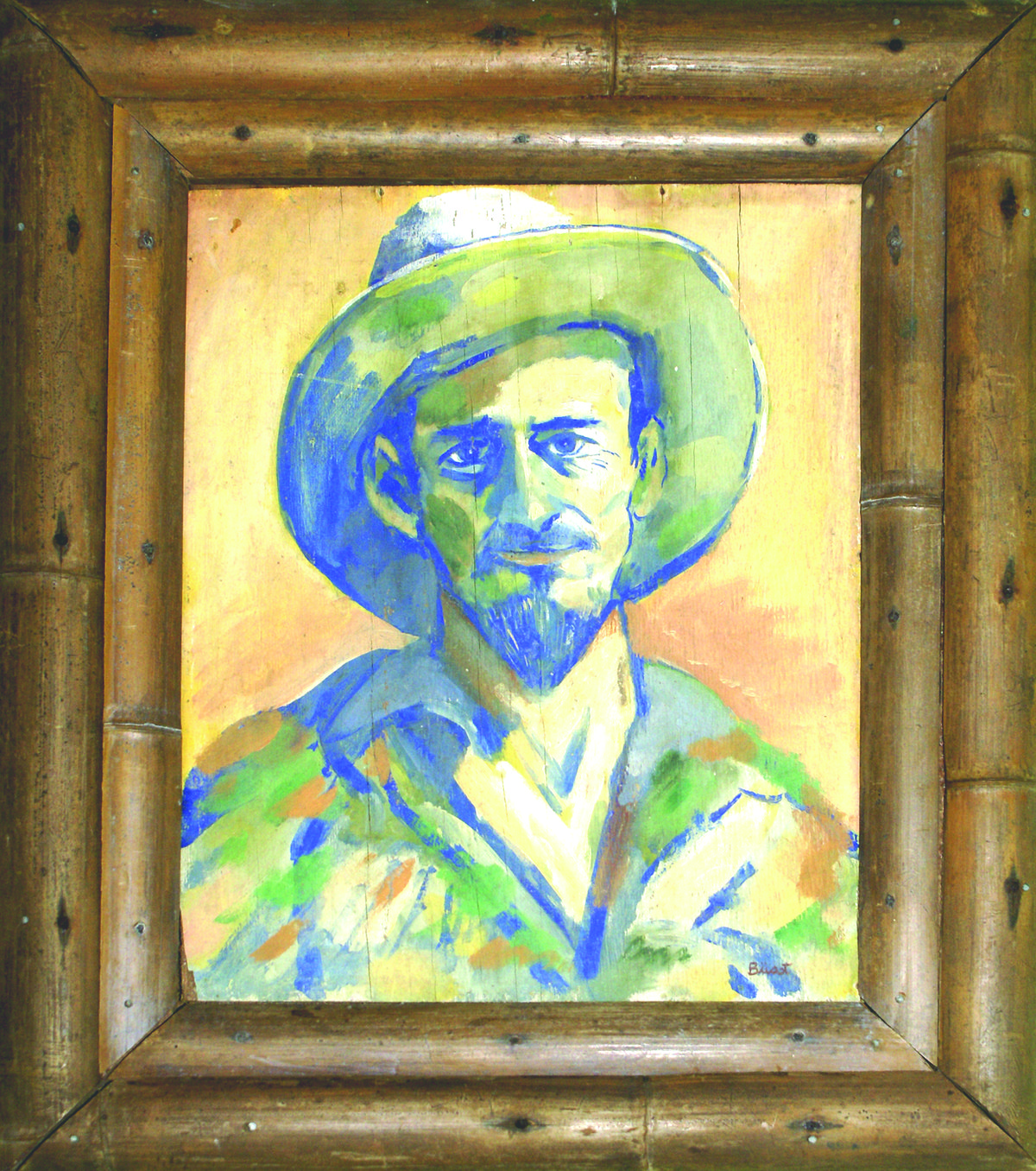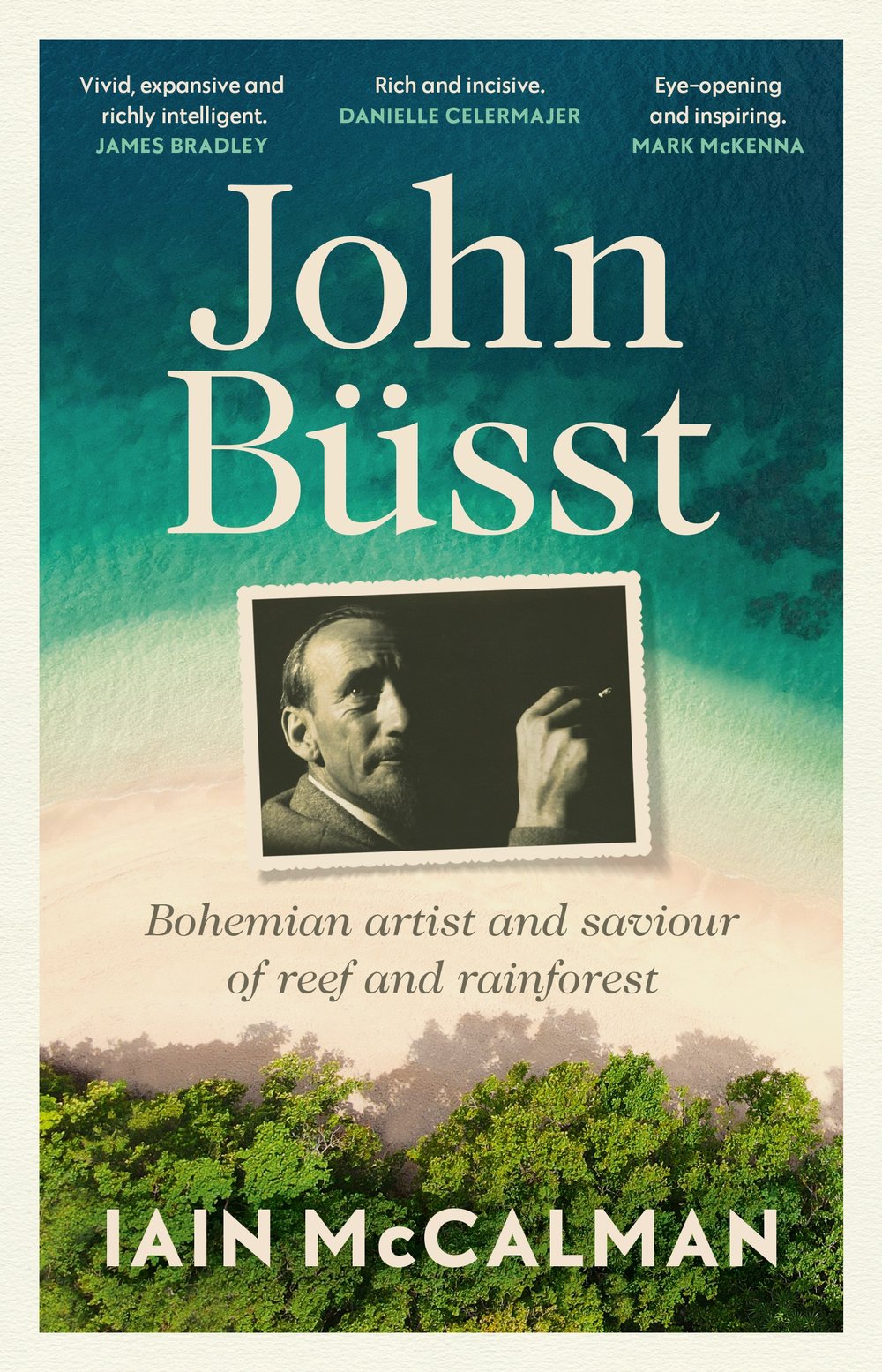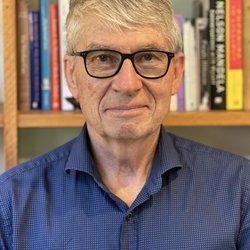Award-winning historian Iain McCalman takes us to Mission Beach where he was inspired to embark on a fascinating and timely biography of John Büsst, a Bendigo-born Melbourne bohemian artist who went on to become one of Australia’s most successful conservationists.
Accelerating up the steep drive, I pass rolling green lawns and towering tropical trees to reach a white homestead off Alexander Drive. Bingil Bay is one of four villages that make up the North Queensland coastal town of Mission Beach halfway between Townsville and Cairns. Locals have told me that it is one of the only places in Queensland ‘where the rainforest meets the Reef’, and I know from reading that it is one of the most biodiverse areas in Australia. It’s also part of the larger, similarly beautiful tourist region dubbed ‘the Cassowary Coast’, which encompasses the three substantial towns of Innisfail, Tully and Cardwell.
It was a bright early morning in January 2014 and I was visiting Mission Beach for the first time because a local tourist organisation had invited me, after reading my recently published history, The Reef – A Passionate History (2013). The book included a chapter that discussed the reef-saving achievements of the late John Büsst, an intriguing environmentalist who’d lived at Mission Beach until his death in 1971. I’d be speaking to an event which was aimed at gathering citizens, business-leaders, conservationists, farmers and Indigenous custodians to discuss a worrying slump in the region’s tourist industry.

Two successive cyclones, five years apart, had swept through the Cassowary Coast, wrecking houses, gardens and shops, flattening the famous Dunk Island resort, smashing coral reefs, ripping up hectares of Gondwana-era rainforest, and damaging habitats of the region’s endangered southern cassowaries. These twin disasters, combined with recent bouts of climate-influenced coral bleaching, had demanded fresh ways to popularise the Cassowary Coast’s combination of natural environmental wonders and cultural heritages.
One chapter of my book focused on what I had called ‘The Great Barrier Reef Environmental War of 1965–75’, a socio-political struggle triggered by the attempts of the ruling Queensland Country-Liberal Party to mine most of the Reef for oil, gas and sugarcane fertiliser. This mad idea had been opposed by a group of campaigners led by the famed poet-activist Judith Wright, as well as forester-scientist Len Webb and John Büsst, a Mission Beach artist-craftsman. Together, this triad had fought a series of decade-long campaigns that helped to save the Reef and establish today’s wonderful Great Barrier Reef Marine Park. Our convenors hoped that publicising this story might attract a fresh wave of tourists to the region.
The former dropout bohemian artist and builder had somehow turned himself into a reef and rainforest warrior and saviour who’d dedicated the rest of his life to ensuring that the ancient natural partnership of these two great Queensland ecosystems would continue in perpetuity.
I’d also received a secondary invitation from some dedicated nature activists, Liz Gallie and Sandal Hayes, who were actively promoting the life and achievements of Mission Beach’s under-recognised local hero. Tragically, John Büsst had died just before the outcome of the Reef War and the World Heritage listing was finalised. As a result, historians and environmentalists tended to forget or underestimate him – so much so, that I’m certain Liz and Sandal know a deal more about John than I do. As well as working tirelessly to protect the region’s endangered local southern cassowaries, they are promoting the importance of John and his wife Alison Büsst’s life stories, environmental struggles and heritage homestead.
I’d already heard that Liz was a superb jeweller-photographer with the fierce honesty of a historian-naturalist, and that Sandal was a brilliant organiser-manager who possessed a fine mind and great charm. They’d invited me today to explore the Büssts’ former premises at Bingil Bay and to undertake a series of beach walks designed to witness some of the formative local environs that had inspired John’s campaigns.
*
As I reflected on my time at Mission Beach, I realised it had taught me something vital I’d not previously recognised about John Büsst. The Bastard of Bingil Bay had not only believed in and fought to protect these interacting systems of rainforest and Reef, but he’d eventually come to embody and symbolise this link in his own person. The former dropout bohemian artist and builder had somehow turned himself into a reef and rainforest warrior and saviour who’d dedicated the rest of his life to ensuring that the ancient natural partnership of these two great Queensland ecosystems would continue in perpetuity. This, surely, was a story that deserved to told.
This is an edited extract from John Büsst: Bohemian artist and saviour of reef and rainforest by Iain McCalman, available now.
To find out more about Iain McCalman's book tour, visit our events page here.



